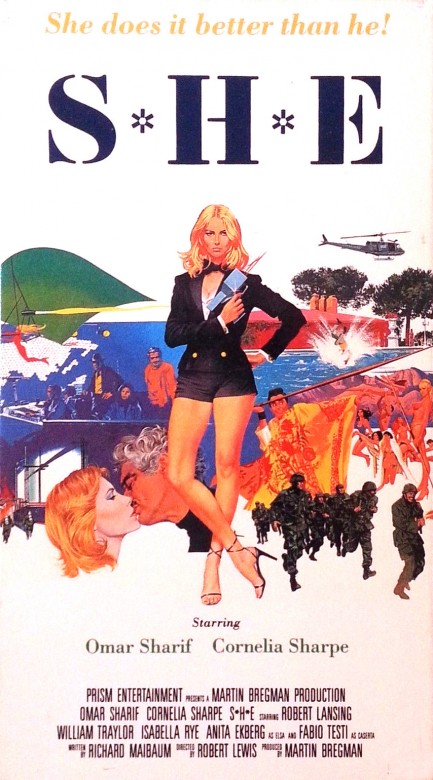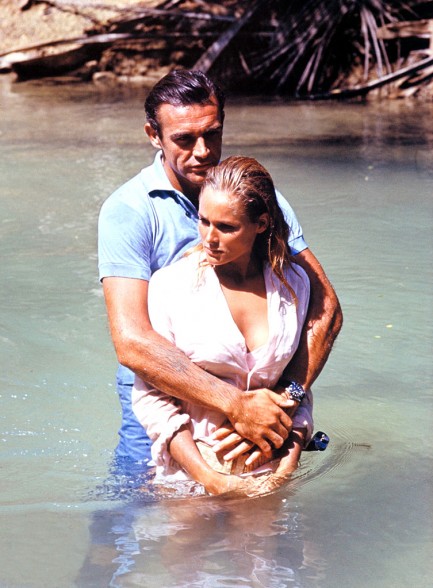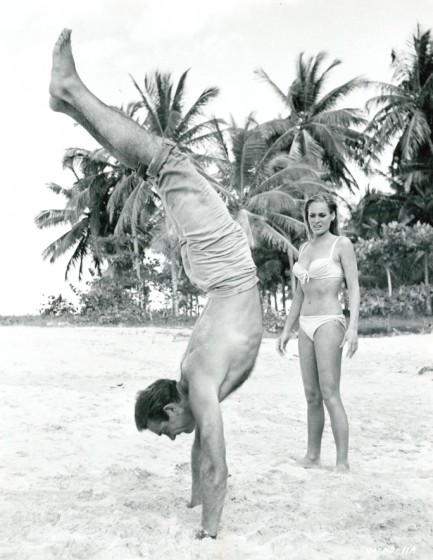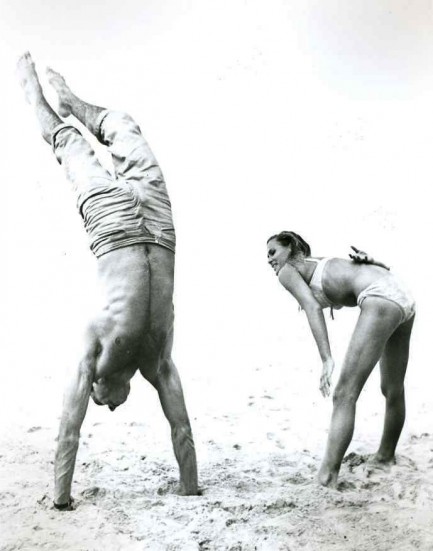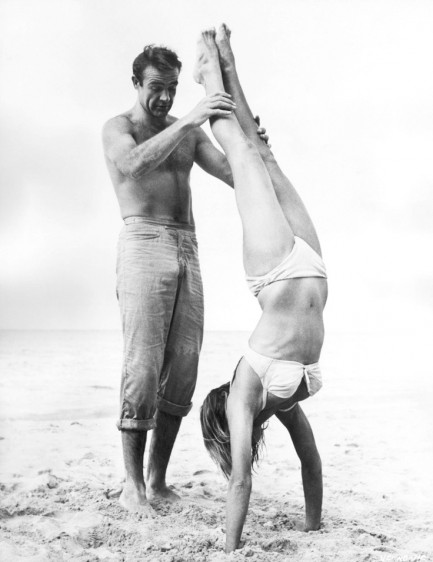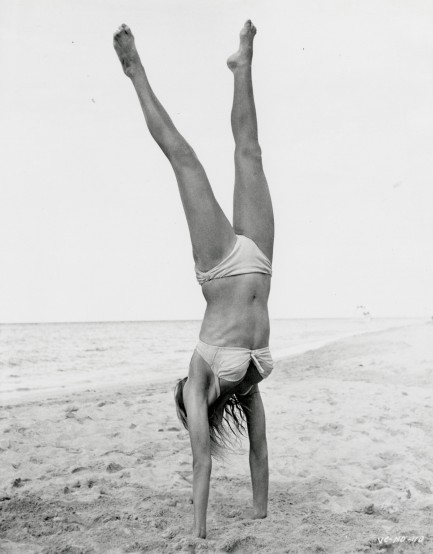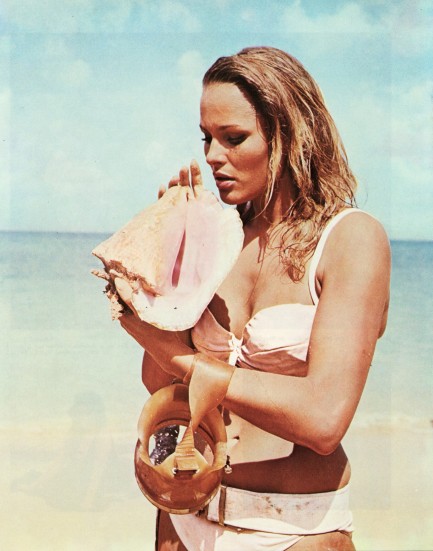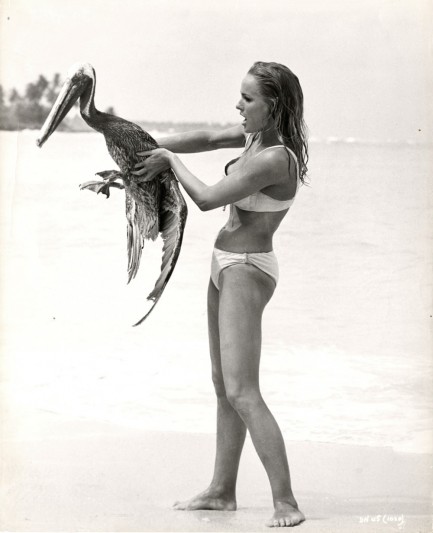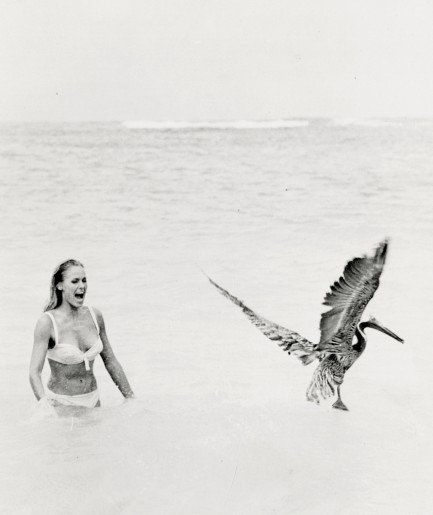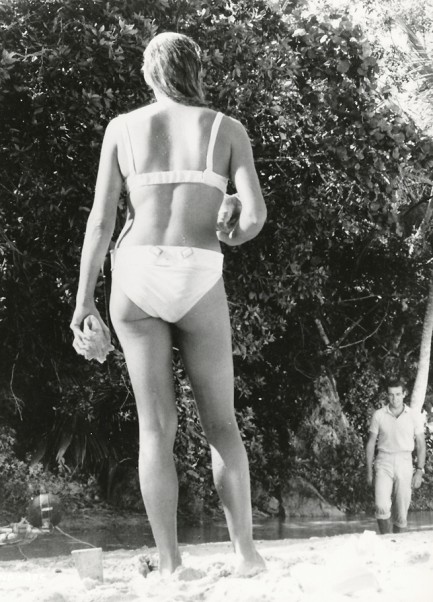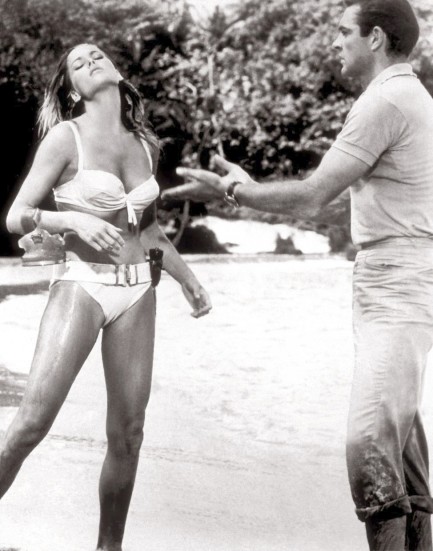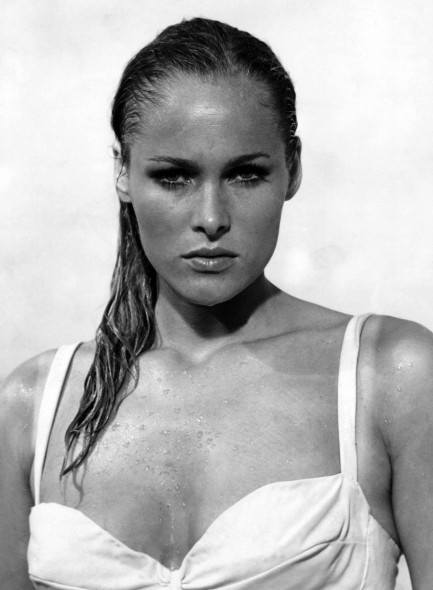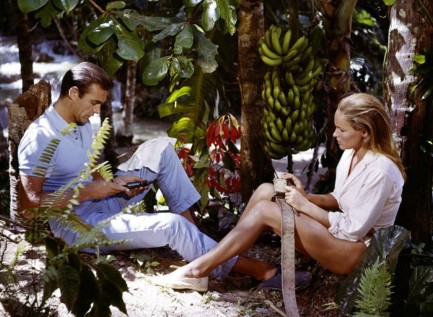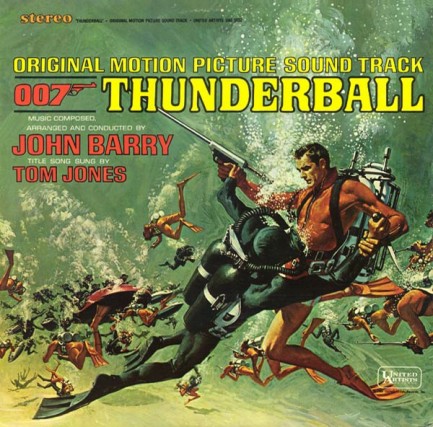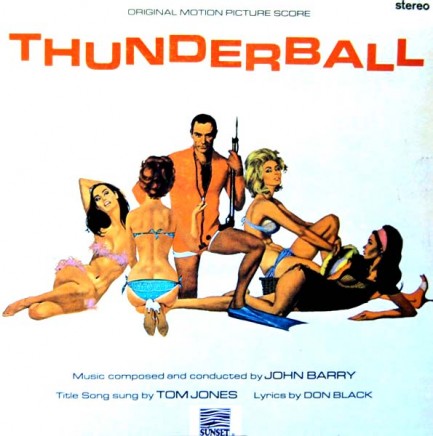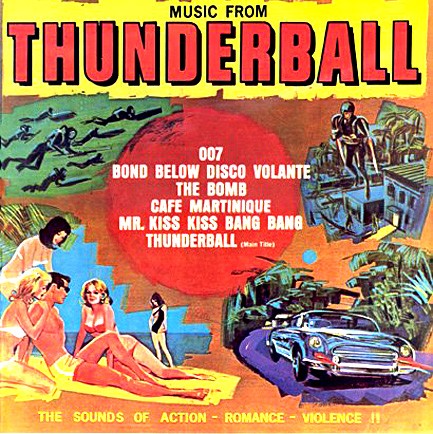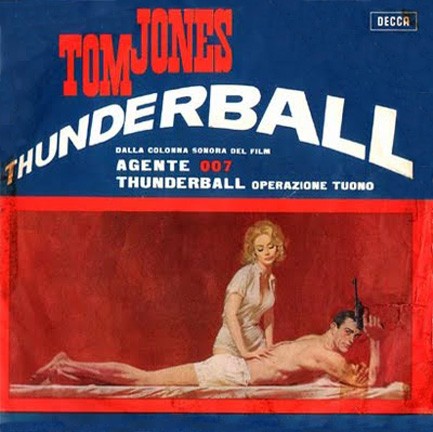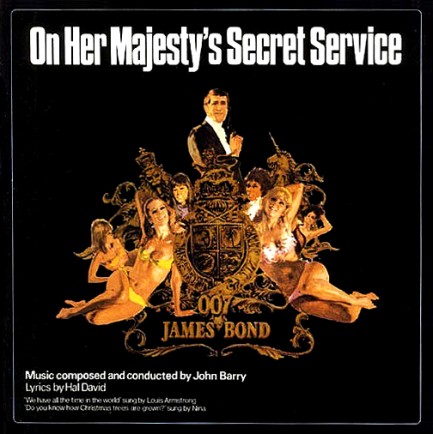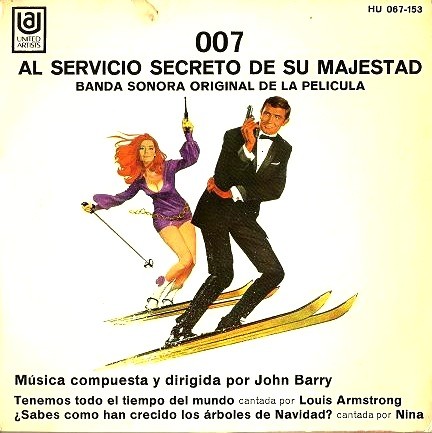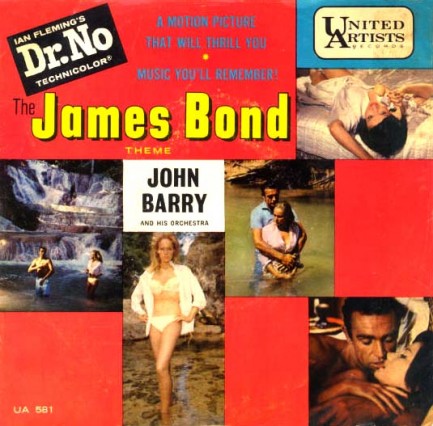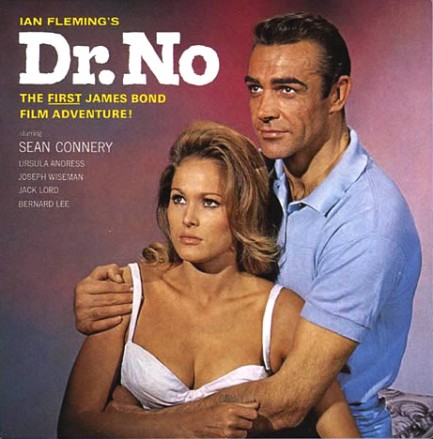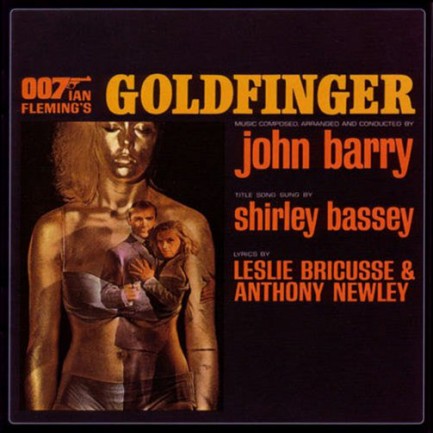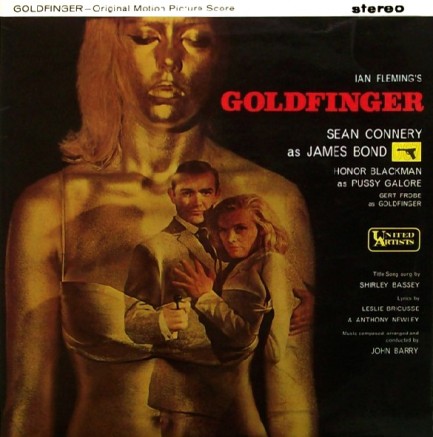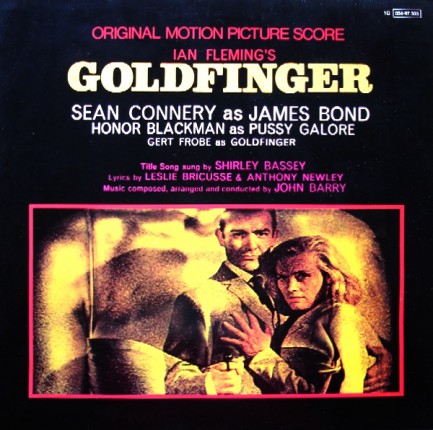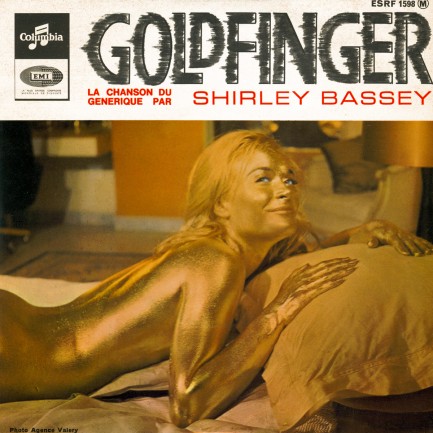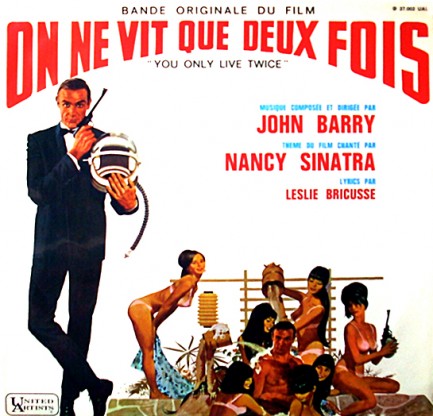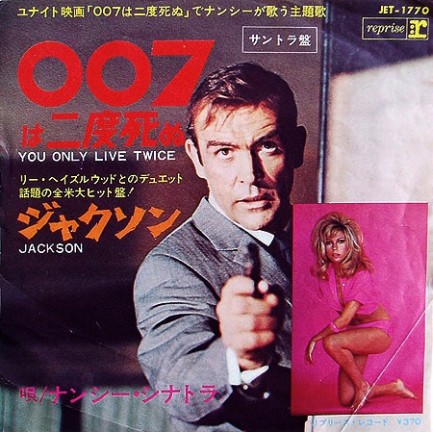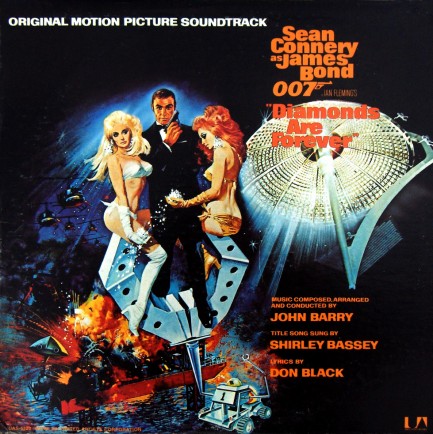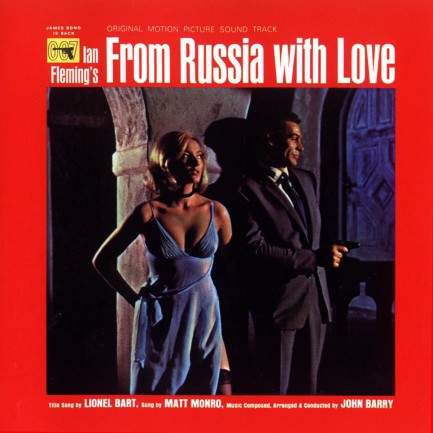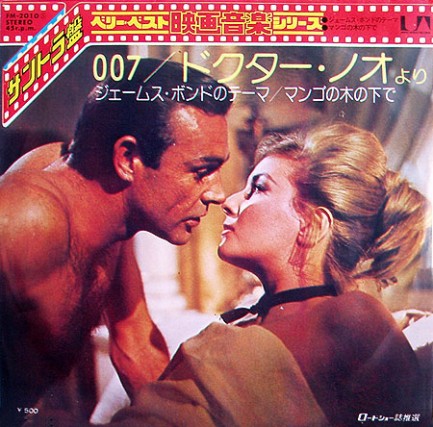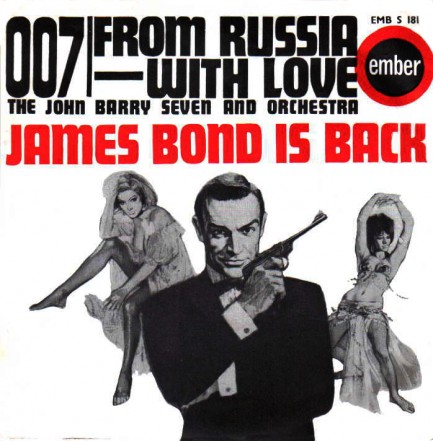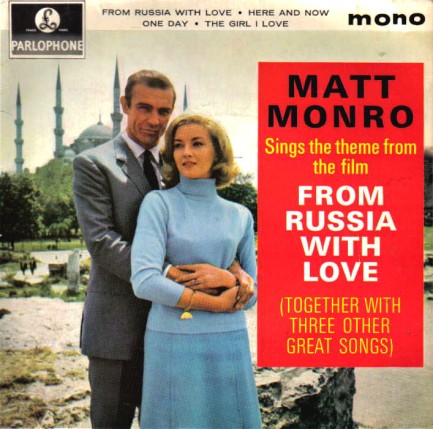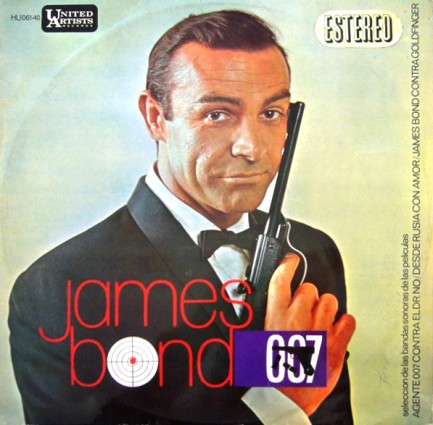 She's good with it, but she's even better with a 9 wood. 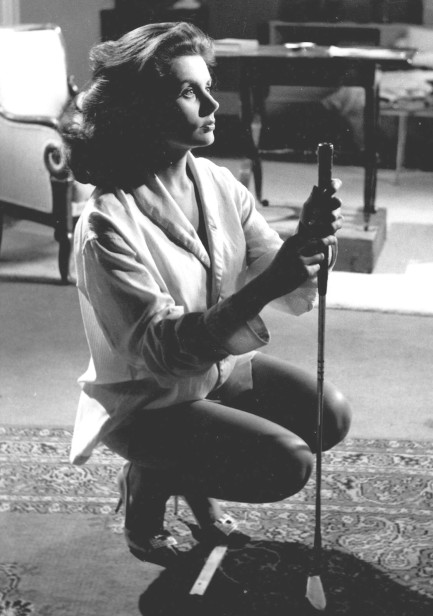
What is it about sports that all of them have so much terminology fit for sexual puns? Someone should do a study on that. Meanwhile, here you see British actress Eunice Gayson, who you remember as Sylvia Trench from the James Bond movies Dr. No (the source of this image) and From Russia with Love. In both films she serves as soft comic relief, as it were, when Sean Connery amusingly abandons her before they can consummate their lust. But that's probably why she survived both films—back then Bond's chance encounters usually were killed.
 Bond. James Bond. Not sure who you are, but stick close anyway. 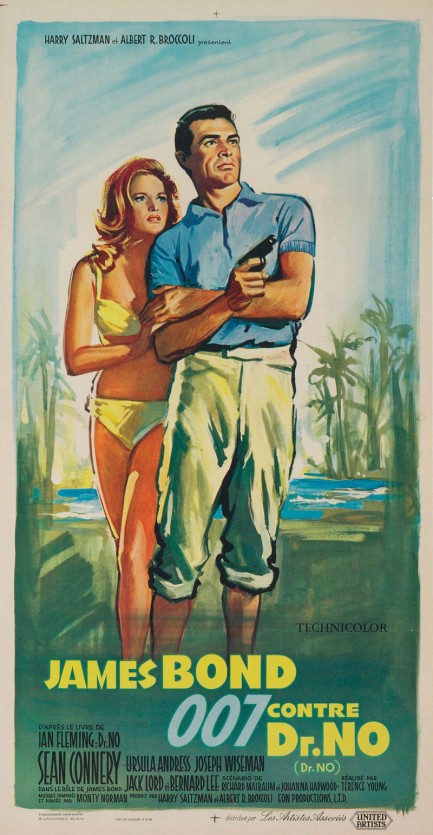
French illustrator Boris Grinsson outdid himself with this promo for James Bond 007 contre Dr. No, aka Dr. No. This is a framable classic, appropriate for a film that reshaped the spy genre. Its only flaw is that while the Sean Connery figure is a good likeness, the representation of Ursula Andress is not very close. We get it though—her perfect, unlined face doesn't give you much to work with. To get Connery close, you just need to make sure you include his bushy eyebrows and the deep facial lines bracketing his mouth. But Andress is a true test of skill. It's still a great poster. Perhaps even our favorite from the Bond franchise. The movie premiered in France today in 1963.
 Filmgoers say yes to No and a franchise is born. 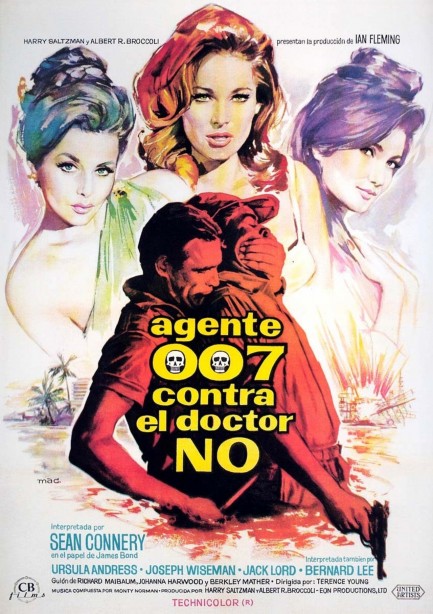
Since we've already talked about two movies inspired by Bond today, why not discuss the landmark that started it all? There had always been spy movies. Even the James Bond films, with their focus on high concept action and fantastical super villains, had predecessors. But United Artists, director Terence Young, Sean Connery, and the rest took the basic notes of those earlier efforts, wove them into a fresh composition, and cranked the volume up to eleven. This Spanish poster painted by Macario Gomez was made for the first Bond film Dr. No, which played in Spain as Agente 007 contra el Dr. No. Ian Fleming's novel had been published in 1958, and the film hit cinemas four years later. Like From Russia with Love, which we watched recently, we've seen it more than once, but not for years, and decided to screen it with fresh eyes.
We imagine audiences had never seen a spy movie quite like this, with its opulent production values and near-seamless construction. Set in Jamaica, the exotic locations are beautifully photographed, and while the filmmakers' portrayal of the island isn't necessarily authentic, it's immersive, and makes the required impression of a land of mystery and danger. An altogether different impression was made by the ravishing Ursula Andress, and we suspect once word got out certain filmgoers bought tickets just to see her. Joseph Wiseman's villainous Julius No, a few hi-budget gadgets, and a secret lair filled with expendable henchmen complete the set-up—and establish the Bond template for the future. Add the unflappable if occasionally imperious spy himself and the fun is complete.
The Bond franchise's success inspired scores of imitators, as discussed in the two posts above, but with a few exceptions those movies usually work today on the level of unintentional comedy or eye-rolling camp. Dr. No, despite Bond's interjections of humor, took itself seriously. Viewers were supposed to believe its most fantastic elements were possible. In addition, they were supposed to see Bond as the uber-male, a man who fights and loves hard, is virtually immune to sentiment, and never mourns losses for long. That notion of ideal manhood has certainly changed—for the better we'd say—but even accounting for the tectonic cultural shifts in the interim Dr. No holds up like the best vintage thrillers. It's stylish, charmingly simple, and—if one assesses it honestly—progressive for its time. It premiered in England in October 1962, and reached Spain today in 1963. 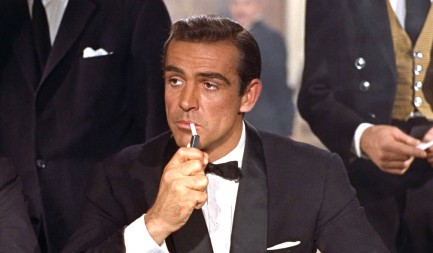 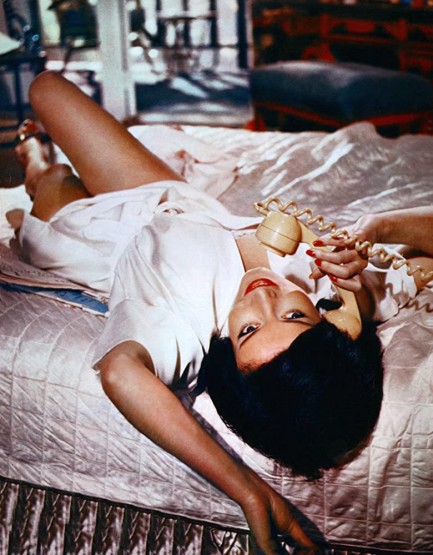 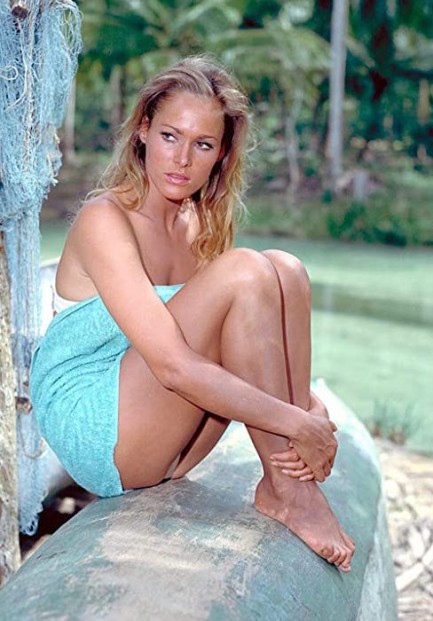 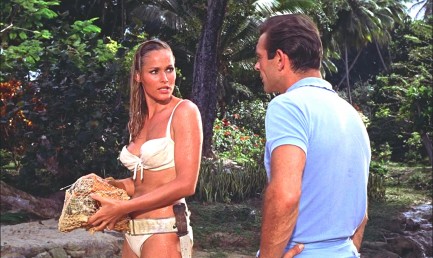 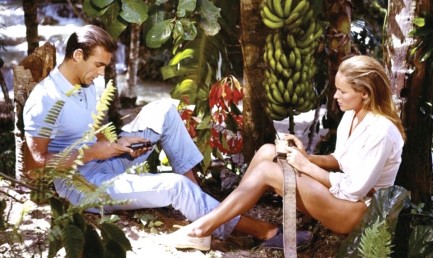 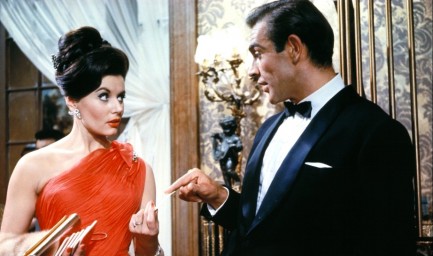 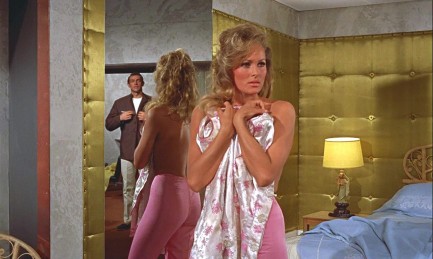 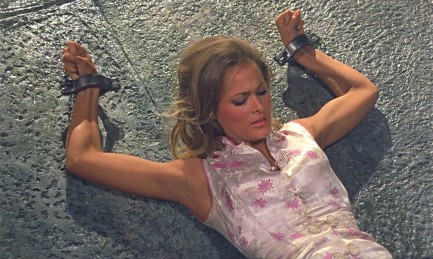 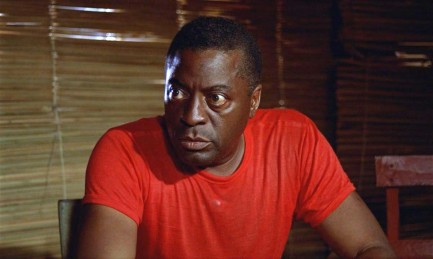 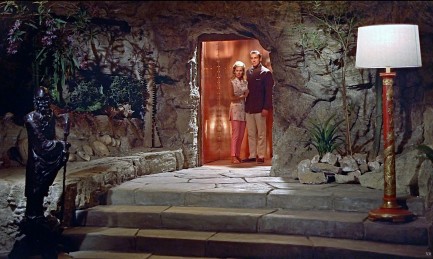 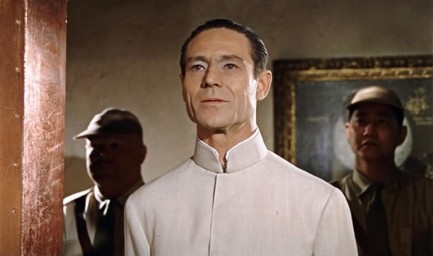 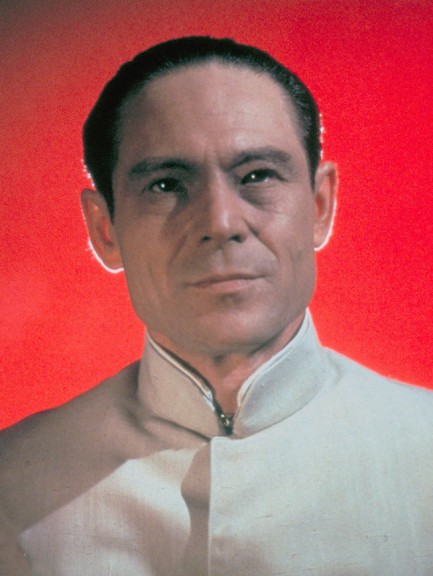 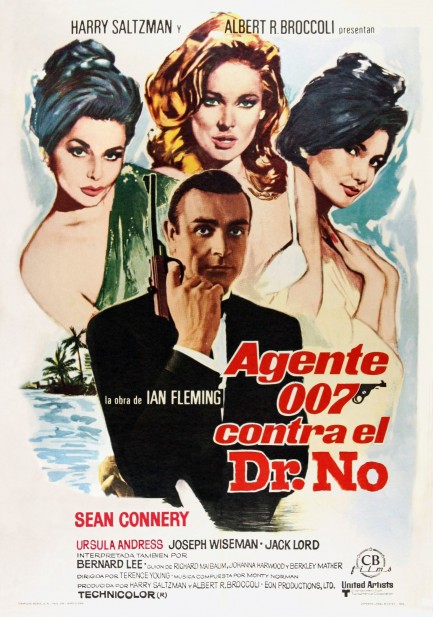
 S*H*E* spies with her little eye a low rent plot to destroy the world. 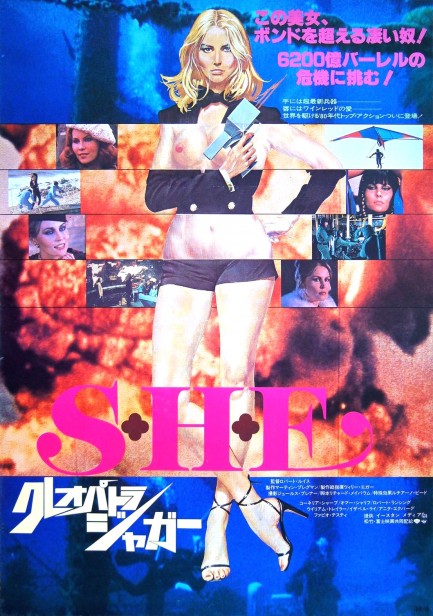
We're doing the acronymic spy thing a third day in row because we have this amazing Japanese poster for the 1980 U.S. film S*H*E*. This shows that the idea of imitating James Bond's acronymic and numeric organizations continued for many years after the trend peaked during the 1960s. Cornelia Sharpe stars as a Security Hazards Expert who battles an international crime ring that threatens the global oil supply.
Interestingly, this was written by Roger Maibaum, who wrote more than a dozen Bond screenplays, including Dr. No, Goldfinger, and Licence To Kill. Which tells you that he may have been envisioning the same sort of high gloss action as in his Bond movies. But we're telling you that his vision was thwarted by a low budget, flat acting from Sharpe, less than compelling music, and the fact that this was a CBS television pilot. For now you can watch it on YouTube at this link—if you dare.
Those with sharp eyes, or Sharpe eyes, will have noticed that the poster was painted by Robert McGinnis. Since it was a made-for-television movie, the U.S. promo art obviously doesn't feature the cut away sections of costume that reveal breasts and midriff. Those subtractions make this piece rare and expensive. Our question immediately became whether the skin meant the international version of the movie had nudity. It actually does, briefly, but that's no help at all.
 Andress gets picturesque in wine country. 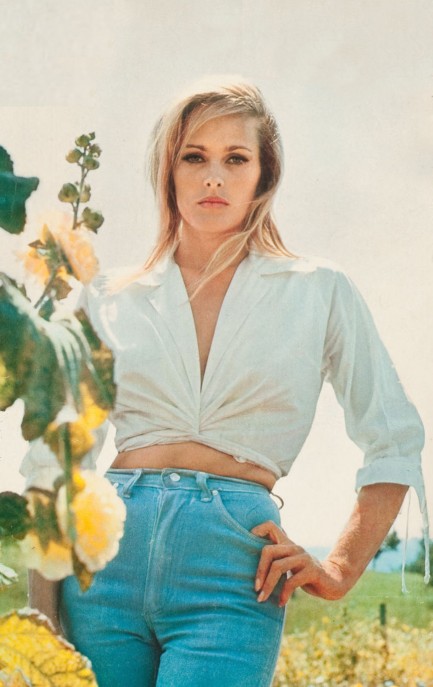
This photo of Swiss actress Ursula Andress in an autumnal vineyard appeared on an issue of Paris Match magazine published in September 1964. Fewer than two years removed from her role in Dr. No it's fair to say she was at this moment one the biggest stars in the world. For the most part, the roles she played didn't make splashes as big as that made by Dr. No, but there's little doubt she's one of the more fondly remembered stars of her era.
 Demongeot explains to Cinémonde how she aspires to inspire. 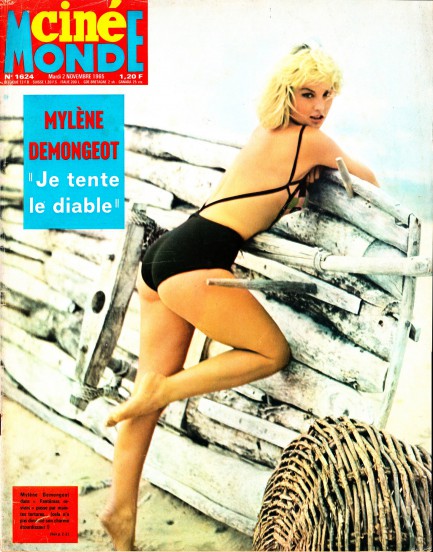
The French weekly Cinémonde debuted in October 1928, with the above issue hitting newsstands today in 1965 starring French goddess Mylène Demongeot on the cover. Inside, her feature is headed with the text “Il faut oser tenter le diable,” which means, “We must dare tempt fate,” and she goes on to say, “Il existe peut-être dix photographes au monde (seulement) à qui, pour nue... ou presque, une actrice puisse faire confiance,” or basically, “There are perhaps ten photographers in the world (only) who… (almost) naked, an actress can trust.” The literal translation reads a bit backward, but you get the drift—she of course means only a few photographers can be trusted to shoot an actress (almost) nude. One of those is apparently British director Terence Young, who helmed Dr. No and two other Bond movies, as well as Zarak and Wait Until Dark, and whose photography you see here. However Demongeot, after all this philosophizing about the (almost) nude form, does not appear (almost) naked in any of the photos. Still, she looks amazing, as always. She says at the end, “Je voudrais qu'il ait envie de les decouper et de les regarder longuement, avant de se coucher. Pour qu’il fasse de beaux rêves.” Something along the lines of wanting men to cut out her photos and look at them before going to bed… to inspire beautiful dreams. Well, we would have to use a laptop instead of cut out photos, and we’d do it, except we have a feeling our girlfriends would not let us get away with it. Of that we’re (almost) sure.
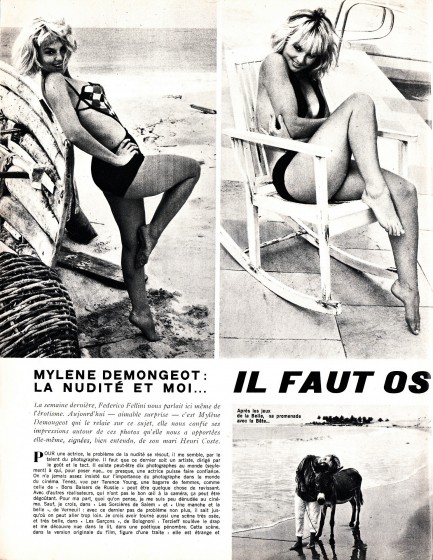 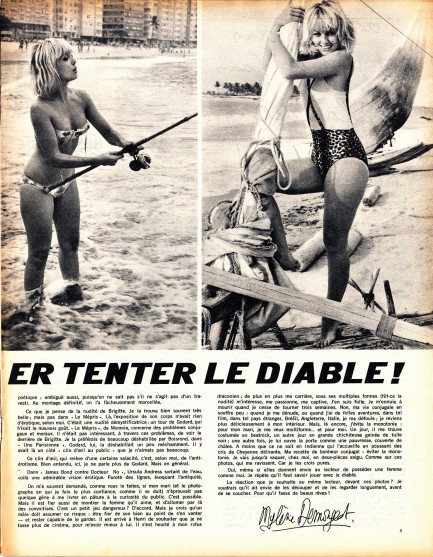 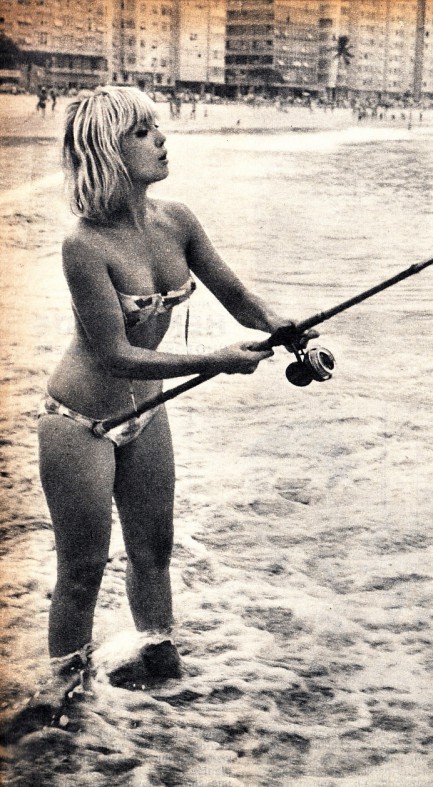
 Sweet Honeychile o’ mine. 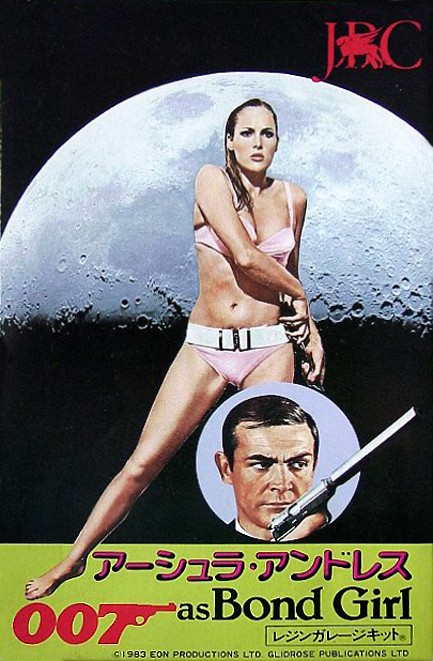 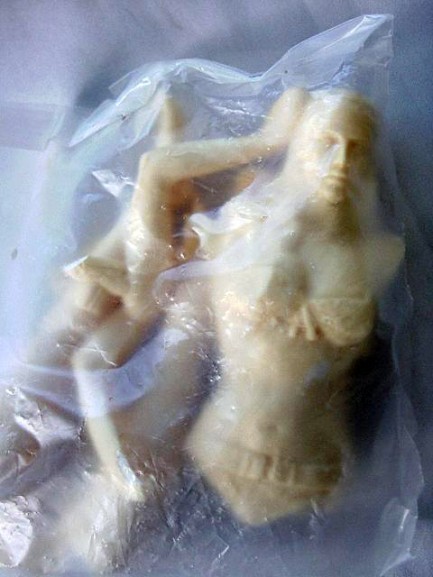 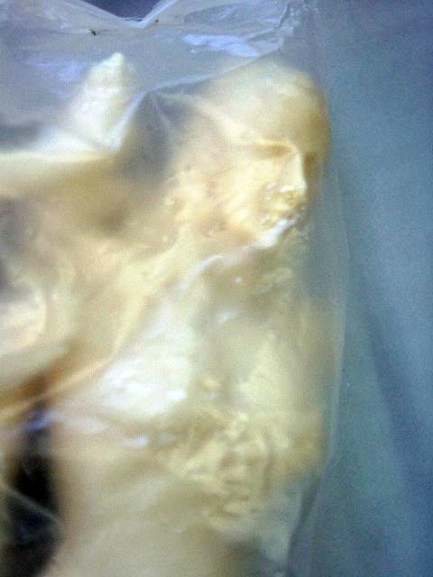
We’ve always been impressed by the variety and quirkiness of Japanese novelties, but the item above—a resin Ursula Andress Dr. No figure—reaches new heights. It’s all the more interesting because it isn’t contemporaneous with the film. Rather, it hit the market in 1983, twenty years after the film’s Japanese debut. Still, the existence of this doll isn’t a complete surprise—western blondes are fetishized in Japan, and Andress’s bikini-clad, knife-wielding Honeychile Ryder is probably one of the most famous blondes to ever appear onscreen. The figure comes complete with the most superfluous assembly instructions in history, just in case you try to attach her legs to her armholes or vice versa, and the final result is… well, actually, we don’t know. Just like a car, this little lovely loses value the moment you drive it out of the showroom, which means the cellophane is going to stay sealed. If you absolutely must see an assembled version, we might entertain a purchase offer. Check your bank account and get back to us. In the meantime, we’ve posted the shot the box art is based on below. And if that isn't enough Andress for you, check here. 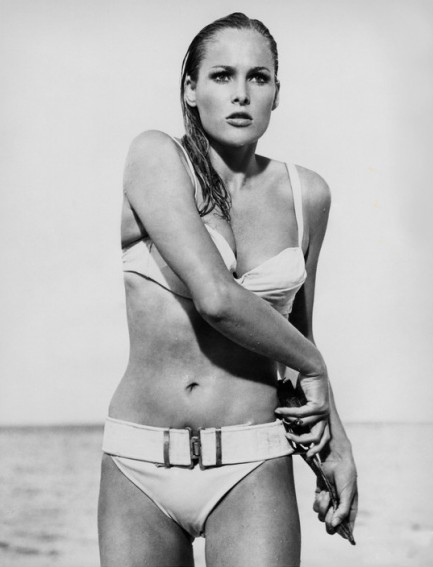
 Il nome è Bond, James Bond. 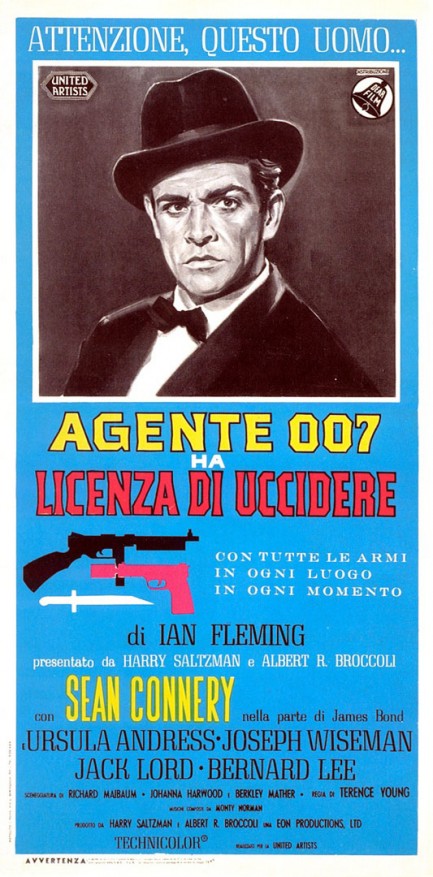
Italian promo poster for the James Bond classic Agente 007: Licenza di uccidere, aka Dr. No, starring Sean Connery. It premiered in Italy today in 1963.

|
 |

The headlines that mattered yesteryear.
2003—Hope Dies
Film legend Bob Hope dies of pneumonia two months after celebrating his 100th birthday. 1945—Churchill Given the Sack
In spite of admiring Winston Churchill as a great wartime leader, Britons elect
Clement Attlee the nation's new prime minister in a sweeping victory for the Labour Party over the Conservatives. 1952—Evita Peron Dies
Eva Duarte de Peron, aka Evita, wife of the president of the Argentine Republic, dies from cancer at age 33. Evita had brought the working classes into a position of political power never witnessed before, but was hated by the nation's powerful military class. She is lain to rest in Milan, Italy in a secret grave under a nun's name, but is eventually returned to Argentina for reburial beside her husband in 1974. 1943—Mussolini Calls It Quits
Italian dictator Benito Mussolini steps down as head of the armed forces and the government. It soon becomes clear that Il Duce did not relinquish power voluntarily, but was forced to resign after former Fascist colleagues turned against him. He is later installed by Germany as leader of the Italian Social Republic in the north of the country, but is killed by partisans in 1945.
|

|
|

It's easy. We have an uploader that makes it a snap. Use it to submit your art, text, header, and subhead. Your post can be funny, serious, or anything in between, as long as it's vintage pulp. You'll get a byline and experience the fleeting pride of free authorship. We'll edit your post for typos, but the rest is up to you. Click here to give us your best shot.

|
|





















